 |
New goby cichlids from Lake Tanganyika
by Patrick Tawil
|
 |

| TA female Tanganicodus cf. irsacae from
Moba. Note the gorgeous coloration, making it one of the most attractive
of the goby cichlids. |
|
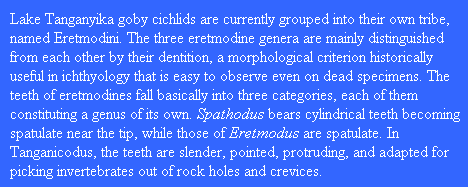 |

| A female Spathodus erythrodon from Tanzania.
Note the absence of bars on the flanks, and the elongate and narrow snout. |
|
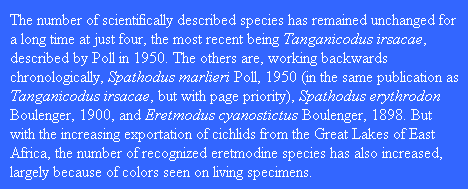 |

| The overall shape of Spathodus marlieri is
similar to S. erythrodon but larger, with fewer blue spots, no orange
dot, and a marked cephalic hump. Photo A. Konings. |
|
 |

| A pair of Tanganicodus sp. “M’toto” showing
the diagnostic dorsal spot. The overall coloration is close to that of
typical T. irsacae specimens. |
|
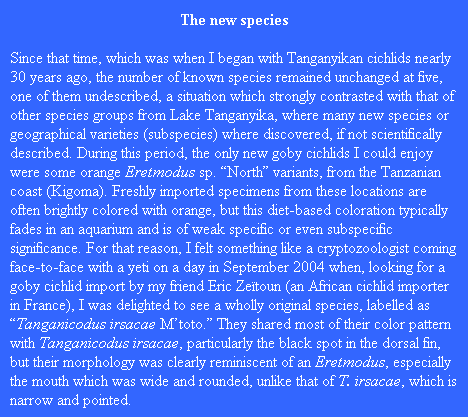 |

| In subdominate Tanganicodus sp. “M’toto” the
dorsal spot tends to vanish as is seen in this adult male. |
|
 |

| The teeth of this goby cichlid from M’toto (Congo)
are of generalized Spathodus type, except that they are procumbent,
as in Tanganicodus. |
|
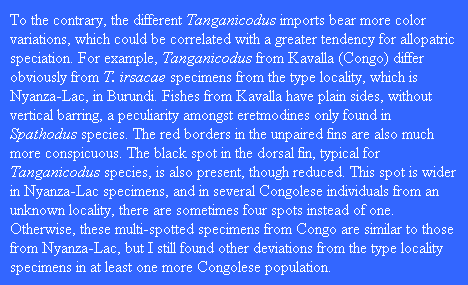 |

| In frontal view, the new species from M’toto is clearly
reminiscent of an Eretmodus species with its wide mouth. |
|
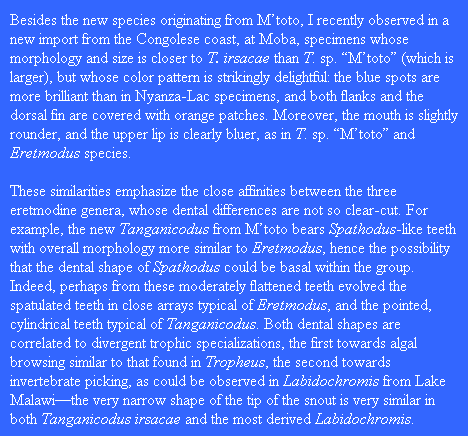 |

| Eretmodus cyanostictus (top) found in a shipment
of E. sp. “North” from Kigoma. The flanks are particularly dotted
in orange, as with specimens of E. sp. “North” from this locality.
Otherwise, the fish is identical to those from Zambia (bottom). |

|
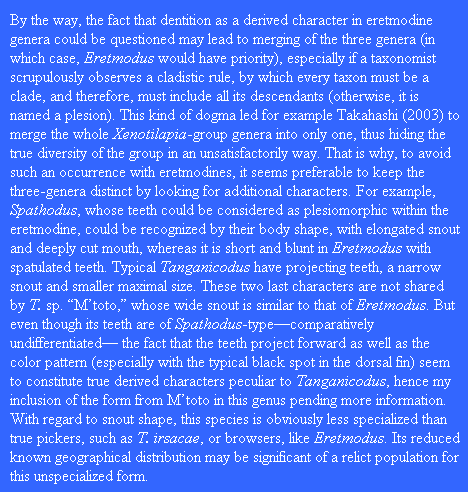 |

| A pair of Eretmodus sp. “North,” originating
from Kigoma, where the spots are more numerous on the caudal peduncle. |
|
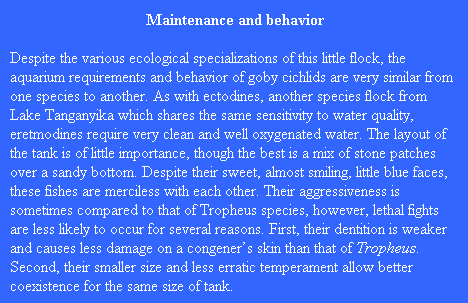 |

| A mouthbrooding male of Eretmodus sp. “North”
originating from Bulu Point. The orange spots are more reddish and concentrated
on the chest. |
|
 |

| Tanganicodus irsacae caught at Nyanza-Lac,
type locality of the species. The specimens from this locality are less
colorful, and the blue spots and lips are paler. |
|
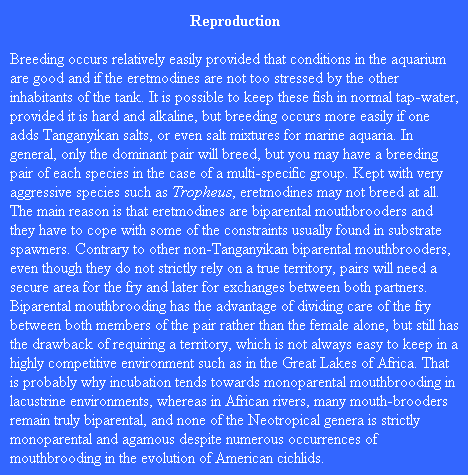 |

| Young reared specimens of Tanganicodus from
Kavalla, showing the absence of vertical bars and the blue spots brighter
and more numerous than in other Tanganicodus, with which they probably
are not conspecific. |
|
 |

| All species of Tanganicodus bear one diagnostic
spot in the dorsal fin, but in some Congolese shipments, up to four spots
may be present. |
|
 |

| A male of a beautiful species of Tanganicodus
from Moba, DR Congo (female above, first photo). |
|
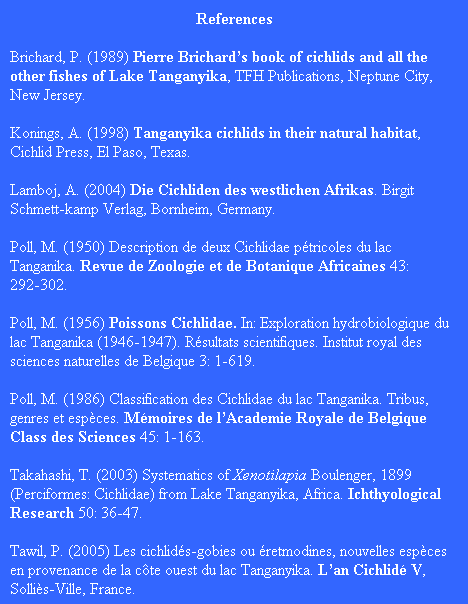 |



























































